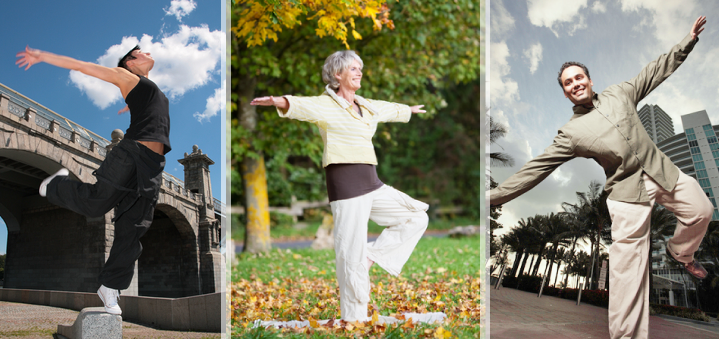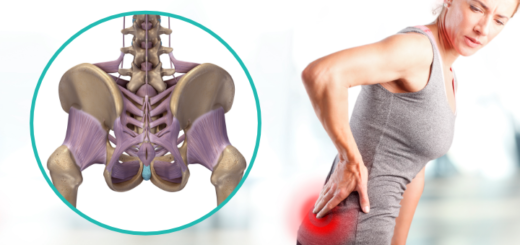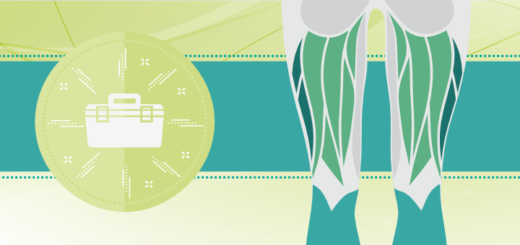Six easy balancing moves for your daily routine
6My son loves to dig, so anytime we get to the park he zooms straight for the sandbox. And while he blissfully loads and unloads his construction equipment I like to walk around the perimeter of the sandbox. I do it not because I am a helicopter parent who likes to hover, but because the borders of the sandbox are usually just wide enough for one foot and raised enough to give a nice balancing challenge without the risk of tumbling down. My favorite way to walk on those is to step one foot directly in front of the other while swinging the leg out wide when I move it. This type of walking challenges your balance and strengthens your abductors. It also keeps you focused.
Our daily lives are full of opportunities for balance training. Waiting in line at a grocery store? Go up and down on the balls of the feet while using your grocery cart to steady yourself if necessary. Riding in an elevator? Lift one foot slightly and practice balancing on one leg as the elevator moves. You can try balancing on your toes or one foot any time – while you cook, brush your teeth, watch TV – and it will help improve your balance.
 Over the years, I’ve spoken with massage therapists, nurses, teachers, flight attendants and hair dressers who had found opportunities to build balance training into their work life as well, and you can, too! I work at a stand-up desk at home (which I highly recommend), which means that while I read or do other work on the computer I can do any of the movements featured below. This helps with balance training, but also strengthens the hips, prevents lower back tension and keeps me alert.
Over the years, I’ve spoken with massage therapists, nurses, teachers, flight attendants and hair dressers who had found opportunities to build balance training into their work life as well, and you can, too! I work at a stand-up desk at home (which I highly recommend), which means that while I read or do other work on the computer I can do any of the movements featured below. This helps with balance training, but also strengthens the hips, prevents lower back tension and keeps me alert.
Now let’s take a moment to evaluate your balance first. In his book Balance: In search of the lost sense Scott McCredie suggests the following test: “While standing on a hard surface, raise one leg about a foot off the ground (you may need to have a chair nearby for support). See how long you can maintain this position.” Research has shown the following averages for this exercise based on age:
20-49 years old – 24-28 seconds
50-59 years old – 21 seconds
60-69 years old – 10 seconds
70-79 years old – 4 seconds
You will need to do this test 3 times and then average your performance. This is your current balancing ability. Then you can begin integrating simple balancing movements (below) into your daily routine and then reevaluate your balance in a month or so and see if there is any change. And please feel free to share the most interesting places where you’ve practiced your balance training in the comments below – I would love to hear it!
[instagram-feed type=hashtag hashtag=”#everydaybalancetraining”]Follow us on Instagram to get regular videos of different pose adaptations.




















Dear Olga I am one of your faithful readers
I belive you’re in Michigan correct? A while a go we communicated.
A family emergency is taken me back to Michigan and was thinking if perhaps I had
The chance and the luck to meet you and
If possible in the midst of our suffering and
Pain be able to come to one of your classes
I am now a Viniyoga teacher and just completed a long weekend training couple weekends ago with Gary K.
I sincerely look forward to hearing from you
Love,
Beatriz??
Dear Olga, I comment here but I could have done it on many of your posts, thank you very much for the great work you keep on doing and for being such a reliable and inspirational source of knowledge! Way to go!
i really enjoy your expertise, especially working in the balancing excersises into my daily routines, just wondering , are there any muscles that can affect your balance, I have piriformis and very weak hamstrings on r side, almost impossible to stand on the r foot, thanks again
Hi Helmut! I don’t know if I would blame piriformis specifically for this; it would be more useful to look at your abductors (outer hip muscles) and overall relationship between the hip musculature. I would suggest that you check out this post about hip imbalances, which can both cause pain and contribute to balance issues: http://sequencewiz.org/2014/04/23/get-hip-pain-can/ It also has a link to a hip assessment practice that might give you a better idea of which relationships are not balanced. Hope this helps!
I will try the exercise and see whether I will manage to balance.
I love your common-sense guides and particularly like your balance ideas. I’ve taken to doing subtle balances while waiting in the grocery line. This works out well because I feel like I always choose the slowest line. Now I appreciate the extra balance time. It works well while waiting at the airport too. First I shift ever so slightly right and left as you suggested in your sequences. Then I do a little ronde de jambe (ballet term) on half and full toe that helps me in my Argentine Tango practice as balance is key.